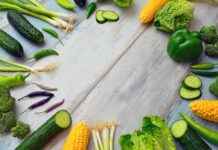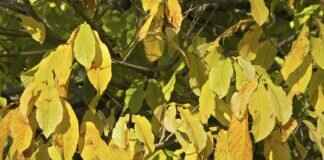Chia seed pudding has gained popularity as a nutritious dessert option that caters to both health enthusiasts and dessert lovers alike. This versatile dish not only satisfies your sweet tooth but also packs a punch with its numerous health benefits. In this article, we will explore the nutritional benefits, preparation methods, and creative variations of chia seed pudding, making it a go-to choice for anyone seeking a healthy yet delicious treat.
Chia seeds are tiny, black seeds derived from the Salvia hispanica plant. These seeds are renowned for their impressive nutritional profile, which includes:
- Omega-3 fatty acids for heart and brain health
- High fiber content that aids digestion
- Protein that supports muscle repair and growth
These attributes make chia seeds a superfood that can easily be incorporated into various meals.
Chia seed pudding offers a multitude of health benefits that can enhance your overall well-being. Some key advantages include:
- Improved digestion due to high fiber content
- Heart health support from omega-3 fatty acids
- Weight management by promoting a feeling of fullness
Making chia seed pudding is incredibly simple and requires just a few ingredients. The basic recipe includes:
- 1/4 cup chia seeds- 1 cup liquid (such as almond milk or coconut milk)- Sweetener to taste (like honey or maple syrup)
Combine these ingredients in a bowl, stir well, and let it sit for at least 2 hours or overnight in the refrigerator for the best texture.
One of the best aspects of chia seed pudding is its versatility. Here are some delicious variations you can experiment with:
- Chocolate Chia Pudding: Add cocoa powder for a rich chocolate flavor.
- Fruit-Infused Pudding: Mix in pureed fruits like mango or berries.
- Spiced Chia Pudding: Incorporate spices like cinnamon or vanilla for added warmth.
Chia seed pudding can be served in various creative ways, making it not only tasty but visually appealing as well. Some ideas include:
- Layering with fruits: Create a parfait with layers of chia pudding, fresh fruits, and granola.
- Breakfast bowls: Top your pudding with nuts, seeds, and a drizzle of honey for a wholesome breakfast.
To achieve the perfect chia seed pudding, be mindful of common mistakes:
- Incorrect liquid ratios: The ideal ratio is typically 1:4 chia seeds to liquid for optimal thickness.
- Insufficient soaking time: Allow at least 2 hours for the seeds to absorb the liquid properly.
Proper storage can help extend the shelf life of your chia seed pudding:
- Refrigeration: Store in an airtight container in the refrigerator for up to five days.
- Freezing: For longer storage, freeze in portions and thaw as needed.
In conclusion, chia seed pudding is not just a healthy dessert; it is a nutritious option that can easily fit into any diet. Its easy preparation, endless variations, and impressive health benefits make it an ideal choice for anyone looking to indulge in a guilt-free treat.

What Are Chia Seeds?
Chia seeds are small, yet powerful seeds that originate from the Salvia hispanica plant, native to Central America. These tiny seeds have gained immense popularity in recent years, often hailed as a superfood due to their impressive nutritional profile. Packed with essential nutrients, chia seeds are an excellent addition to a balanced diet.
Chia seeds are renowned for their high content of omega-3 fatty acids, which are crucial for maintaining heart health. In fact, they contain more omega-3s than salmon, making them one of the best plant-based sources available. Additionally, chia seeds are rich in fiber, providing a whopping 11 grams per ounce. This high fiber content aids in digestion and promotes a feeling of fullness, making them a popular choice for those looking to manage their weight.
- Protein Powerhouse: Chia seeds provide a complete protein source, containing all nine essential amino acids. This makes them an excellent option for vegetarians and vegans.
- Rich in Antioxidants: These seeds are loaded with antioxidants, which help combat oxidative stress and inflammation in the body.
- Bone Health: Chia seeds are a good source of calcium, magnesium, and phosphorus, essential minerals for maintaining strong bones.
The health benefits of incorporating chia seeds into your diet are numerous:
- Improved Digestion: The soluble fiber in chia seeds absorbs water, forming a gel-like substance that helps regulate bowel movements and prevent constipation.
- Heart Health: Omega-3 fatty acids, along with other nutrients in chia seeds, can help lower cholesterol levels and reduce the risk of heart disease.
- Weight Management: Their high fiber content promotes satiety, which can help control appetite and prevent overeating.
Adding chia seeds to your meals is simple and versatile:
- Chia Seed Pudding: Mix chia seeds with your choice of milk and sweetener, let it sit overnight, and enjoy a delicious pudding.
- Smoothies: Blend chia seeds into your favorite smoothie for an extra nutrient boost.
- Baking: Use chia seeds as an egg substitute in vegan baking or sprinkle them on top of baked goods for added crunch.
While chia seeds are generally safe for most people, it’s important to consume them in moderation. Due to their high fiber content, excessive intake can lead to digestive discomfort. It’s also advisable to soak chia seeds before consumption to enhance digestibility.
In summary, chia seeds are a remarkable superfood that offers a plethora of health benefits. Their nutrient density, combined with their versatility in culinary applications, makes them an excellent addition to any diet. Whether you’re looking to improve your heart health, manage your weight, or simply enjoy a nutritious snack, chia seeds are a fantastic choice.

Health Benefits of Chia Seed Pudding
Chia seed pudding has gained popularity not only as a delicious dessert but also as a powerhouse of health benefits. This versatile dish is made by soaking chia seeds in liquid, resulting in a creamy texture that can be customized with various flavors and toppings. Let’s delve deeper into the and why it deserves a spot in your daily diet.
Chia seeds are tiny black or white seeds derived from the Salvia hispanica plant. They are a rich source of essential nutrients, including:
- Omega-3 Fatty Acids: Vital for heart and brain health.
- Dietary Fiber: Aids digestion and promotes satiety.
- Protein: Supports muscle repair and growth.
- Antioxidants: Combat oxidative stress and inflammation.
The high fiber content in chia seeds plays a crucial role in digestive health. When soaked in liquid, chia seeds expand and form a gel-like substance, which helps:
- Regulate bowel movements
- Prevent constipation
- Enhance nutrient absorption
Including chia seed pudding in your diet can lead to improved gut health and a more efficient digestive system.
Yes! The omega-3 fatty acids found in chia seeds are known to support cardiovascular health. They help:
- Reduce inflammation
- Lower cholesterol levels
- Decrease blood pressure
By incorporating chia seed pudding into your meals, you can enjoy a tasty treat while promoting a healthy heart.
Chia seeds can be an excellent ally in weight management due to their ability to absorb liquid and expand in the stomach, leading to a feeling of fullness. This can help reduce overall calorie intake. Additionally, the high fiber content supports stable blood sugar levels, which can curb cravings.
Making chia seed pudding is simple and requires minimal ingredients. Here’s a basic recipe:
Ingredients:- 1/4 cup chia seeds- 1 cup almond milk (or any preferred milk)- 1-2 tablespoons sweetener (honey, maple syrup, or agave)- Optional: vanilla extract, cocoa powder, or fruit for flavoringInstructions:1. In a bowl, combine chia seeds and almond milk.2. Stir in the sweetener and any additional flavorings.3. Allow the mixture to sit for about 5 minutes, then stir again to prevent clumping.4. Cover and refrigerate for at least 2 hours or overnight.5. Serve chilled, topped with fruits or nuts.
Chia seed pudding can be enjoyed in various ways, such as:
- Layering with yogurt and fruits for a parfait
- Blending into smoothies for added nutrition
- Using as a topping for pancakes or waffles
To maintain freshness, store chia seed pudding in an airtight container in the refrigerator. It can last up to 5 days. For longer storage, consider freezing portions for a quick and healthy dessert option.
Incorporating chia seed pudding into your diet not only satisfies your sweet cravings but also provides a multitude of health benefits that can enhance your overall well-being.
Rich in Omega-3 Fatty Acids
When it comes to enhancing our overall health, few nutrients are as important as omega-3 fatty acids. These essential fats play a significant role in maintaining various bodily functions, particularly brain function and heart health. Among the many sources of omega-3s, chia seeds stand out as one of the best plant-based options available. Let’s delve deeper into the benefits of omega-3 fatty acids and how chia seeds can be a valuable addition to your diet.
Omega-3 fatty acids are a type of polyunsaturated fat that is crucial for human health. They are categorized into three main types: ALA (alpha-linolenic acid), EPA (eicosapentaenoic acid), and DHA (docosahexaenoic acid). While EPA and DHA are primarily found in fish and algae, ALA is predominantly found in plant sources, making chia seeds an excellent choice for those following a plant-based diet.
Omega-3 fatty acids are vital for cognitive health. They contribute to the structural integrity of brain cells and are involved in neurotransmission. Research suggests that a diet rich in omega-3s may enhance memory and learning abilities. Furthermore, these fatty acids have been linked to a reduced risk of neurodegenerative diseases such as Alzheimer’s and dementia.
Heart disease remains one of the leading causes of death globally, and omega-3 fatty acids can help mitigate this risk. They are known to lower triglyceride levels, reduce blood pressure, and decrease the likelihood of arrhythmias. Additionally, omega-3s have anti-inflammatory properties that can help combat chronic inflammation, a significant contributor to heart disease.
Chia seeds are tiny but mighty. Just a small serving provides a substantial amount of omega-3 fatty acids, fiber, protein, and essential minerals. One ounce of chia seeds contains about 5 grams of omega-3s, making them one of the richest plant sources of these essential fats. Additionally, they are incredibly versatile and can be easily incorporated into various dishes, from smoothies to baked goods.
- Smoothies: Add a tablespoon of chia seeds to your morning smoothie for an extra boost of nutrition.
- Chia Seed Pudding: Combine chia seeds with your choice of milk and let them soak overnight for a delicious pudding.
- Baking: Use chia seeds as an egg substitute in vegan baking or sprinkle them on top of bread before baking.
- Salads: Toss chia seeds into salads for added crunch and nutrition.
Incorporating chia seeds into your diet is an easy and effective way to increase your omega-3 fatty acid intake. With their numerous health benefits, including improved brain function and heart health, chia seeds can play a pivotal role in a balanced diet. Whether you enjoy them in a pudding, smoothie, or salad, these tiny seeds pack a powerful nutritional punch that can support your overall wellness.
How Omega-3s Support Heart Health
Omega-3 fatty acids are a group of essential fats that play a crucial role in maintaining heart health. These fats are not produced by the body and must be obtained through diet or supplements. They are primarily found in fatty fish, flaxseeds, chia seeds, and walnuts. The benefits of omega-3 fatty acids are well-documented, and their impact on cardiovascular health is profound.
- Reduction of Inflammation: Omega-3s are known for their anti-inflammatory properties. Chronic inflammation is a significant contributor to heart disease. By reducing inflammation, omega-3 fatty acids help protect the heart and blood vessels from damage.
- Lowering Cholesterol Levels: These essential fats can help lower triglycerides, a type of fat found in the blood. High levels of triglycerides are linked to an increased risk of heart disease. Omega-3s can also improve the ratio of good (HDL) to bad (LDL) cholesterol.
- Improving Blood Vessel Function: Omega-3 fatty acids promote better endothelial function, which is crucial for maintaining healthy blood vessels. This improved function helps regulate blood pressure and reduces the risk of atherosclerosis, a condition where arteries become narrowed or blocked.
- Reducing Blood Clotting: Omega-3s can decrease the tendency of blood to clot, which is beneficial in preventing heart attacks and strokes. By making blood less viscous, these fatty acids help maintain smooth blood flow.
- Heart Rhythm Stability: Omega-3 fatty acids are linked to a lower risk of arrhythmias, which are irregular heartbeats that can lead to sudden cardiac death. They help stabilize the electrical activity of the heart, promoting a regular heartbeat.
What Foods Are Rich in Omega-3 Fatty Acids?
Incorporating omega-3-rich foods into your diet is essential for reaping their heart health benefits. Here are some excellent sources:
| Food Source | Omega-3 Content (per 100g) |
|---|---|
| Salmon | 2,260 mg |
| Chia Seeds | 17,000 mg |
| Flaxseeds | 22,800 mg |
| Walnuts | 9,080 mg |
| Sardines | 2,205 mg |
How Much Omega-3 Do You Need?
The recommended daily intake of omega-3 fatty acids varies depending on age, gender, and health status. Generally, it is suggested that adults consume at least 250-500 mg of combined EPA and DHA (two types of omega-3s) per day for optimal heart health. For those with existing heart conditions, higher doses may be recommended.
Are There Any Risks?
While omega-3 fatty acids are beneficial, it is essential to consume them in moderation. High doses can lead to bleeding problems and may interact with certain medications, particularly blood thinners. It is advisable to consult a healthcare provider before significantly increasing omega-3 intake through supplements.
In summary, omega-3 fatty acids are a vital component of a heart-healthy diet. Their ability to reduce inflammation, lower cholesterol levels, and improve blood vessel function makes them indispensable for cardiovascular health. Incorporating omega-3-rich foods into your meals can provide significant health benefits and contribute to a longer, healthier life.
Brain Function and Omega-3s
When it comes to maintaining optimal brain health, the role of omega-3 fatty acids cannot be overstated. These essential fats are not only vital for cognitive function but also play a significant role in enhancing memory and potentially reducing the risk of neurodegenerative diseases. Understanding how these nutrients contribute to brain health can empower individuals to make informed dietary choices.
Omega-3 fatty acids are a type of polyunsaturated fat that are crucial for human health. The three main types include:
- ALA (alpha-linolenic acid): Found in plant sources such as flaxseeds and chia seeds.
- DHA (docosahexaenoic acid): Primarily found in fish and algae, essential for brain structure.
- EPA (eicosapentaenoic acid): Also found in fish, known for its anti-inflammatory properties.
The human brain is composed of nearly 60% fat, and a significant portion of this fat is made up of omega-3 fatty acids, particularly DHA. This highlights the importance of these fats in maintaining brain structure and function. Research indicates that omega-3s contribute to:
- Improved Memory: Studies show that individuals with higher levels of DHA tend to perform better on memory tests.
- Enhanced Learning: Omega-3s are linked to improved learning capabilities, particularly in children and adolescents.
- Neuroprotection: These fats may protect against cognitive decline as we age, reducing the risk of diseases such as Alzheimer’s.
Beyond cognitive function, omega-3 fatty acids are also associated with improved mental health. They have been shown to:
- Reduce Symptoms of Depression: Some studies suggest that omega-3 supplementation can help alleviate symptoms of depression and anxiety.
- Support Emotional Well-being: Regular intake of omega-3s can contribute to overall emotional stability.
Incorporating omega-3 fatty acids into your diet is easier than you might think. Here are some practical tips:
- Include Fatty Fish: Aim to consume fatty fish such as salmon, mackerel, or sardines at least twice a week.
- Add Chia Seeds: Sprinkle chia seeds on yogurt, oatmeal, or salads for a nutrient boost.
- Use Flaxseed Oil: Incorporate flaxseed oil into dressings or smoothies for a plant-based source of omega-3s.
While omega-3s are generally safe for most people, it’s important to consider:
- Consulting a Healthcare Provider: Individuals on blood thinners or those with certain health conditions should consult a doctor before increasing omega-3 intake.
- Quality of Supplements: If choosing to take omega-3 supplements, opt for high-quality products that are free from contaminants.
In conclusion, omega-3 fatty acids play a vital role in supporting cognitive function, improving memory, and potentially reducing the risk of neurodegenerative diseases. By incorporating sources of omega-3s into your diet, you can take proactive steps towards enhancing your brain health and overall well-being.
High Fiber Content
Chia seeds are renowned for their , which is one of the key reasons why they are considered a superfood. Each serving of chia seeds contains approximately 10 grams of dietary fiber, which is about 40% of the recommended daily intake for adults. But what makes this fiber so beneficial?
The fiber found in chia seeds is primarily soluble fiber, which absorbs water and forms a gel-like substance in the digestive tract. This process helps to:
- Regulate bowel movements: The gel-like consistency aids in moving waste through the intestines, preventing constipation.
- Support gut health: A healthy gut microbiome thrives on fiber, helping to maintain a balanced digestive system.
- Reduce digestive discomfort: By promoting regularity, chia seeds can help alleviate bloating and gas.
In addition to aiding digestion, the high fiber content of chia seeds plays a crucial role in promoting satiety. When consumed, the soluble fiber expands in the stomach, which can lead to a feeling of fullness. This can be particularly beneficial for those looking to manage their weight. But how does this work?
- Reduced hunger: Eating foods high in fiber can reduce overall caloric intake by curbing hunger pangs.
- Longer-lasting energy: The slow digestion of fiber-rich foods means that energy is released gradually, helping to prevent energy crashes.
Another significant benefit of chia seeds is their ability to help regulate blood sugar levels. The soluble fiber slows down the absorption of sugar in the bloodstream, which can be particularly beneficial for individuals with diabetes or those at risk of developing the condition. Here’s how it works:
- Stabilizing blood sugar: By preventing spikes in blood sugar, chia seeds can help maintain steady energy levels.
- Improving insulin sensitivity: Regular consumption of fiber-rich foods has been linked to improved insulin sensitivity, which is crucial for metabolic health.
Given their numerous health benefits, it’s easy to see why incorporating chia seeds into your diet can be advantageous. Here are some practical tips:
- Add to smoothies: Blend chia seeds into your favorite smoothie for an added fiber boost.
- Top your yogurt: Sprinkle chia seeds over yogurt or oatmeal for a nutritious breakfast.
- Use in baking: Substitute eggs with chia seeds in baking recipes for added moisture and nutrition.
In conclusion, the high fiber content in chia seeds not only aids digestion but also promotes satiety and helps regulate blood sugar levels. By incorporating this superfood into your meals, you can enhance your overall health and well-being.
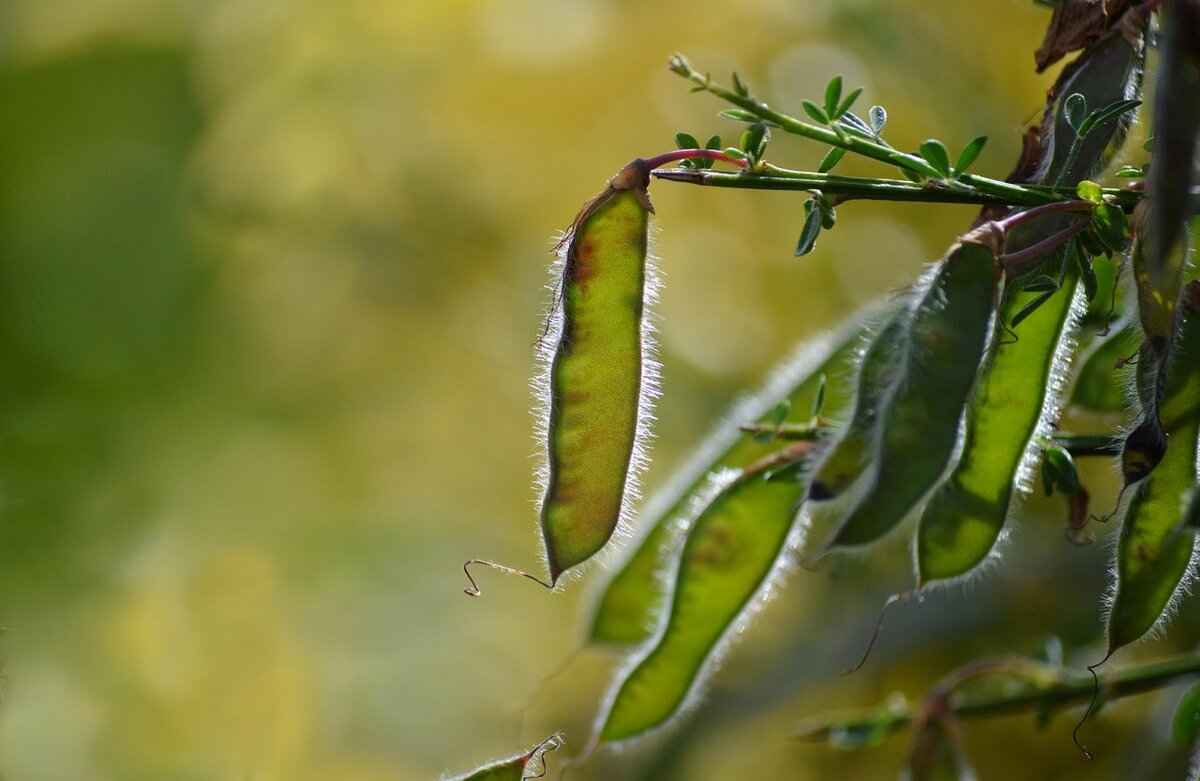
How to Make Chia Seed Pudding
Chia seed pudding has become a popular choice for health enthusiasts and dessert lovers alike due to its simplicity and versatility. With just a handful of ingredients, you can create a delicious and nutritious treat that can be tailored to your individual tastes and dietary needs. This article will guide you through the process of making chia seed pudding, offering tips and creative variations to elevate your culinary experience.
To make a basic chia seed pudding, you will need:
- Chia seeds – The star ingredient that provides texture and nutrition.
- Liquid – Common choices include almond milk, coconut milk, or any plant-based milk.
- Sweetener – Options include honey, maple syrup, or stevia, depending on your preference.
- Flavorings – Vanilla extract, cocoa powder, or spices like cinnamon can enhance the taste.
Making chia seed pudding is incredibly easy. Follow these simple steps:
- In a bowl, combine 1/4 cup of chia seeds with 1 cup of your chosen liquid.
- Add your preferred sweetener and flavorings to the mixture.
- Stir well to ensure the chia seeds are evenly distributed and not clumping together.
- Let the mixture sit for about 5 minutes, then stir again to break up any clumps.
- Cover the bowl and refrigerate for at least 2 hours or overnight.
Soaking chia seeds is crucial as it allows them to absorb the liquid, expand, and develop a gel-like consistency. This not only enhances the texture but also promotes better digestion of the seeds. Without adequate soaking time, you may end up with a gritty pudding that lacks the creamy mouthfeel that makes chia pudding so enjoyable.
The beauty of chia seed pudding lies in its customizability. Here are some exciting variations to try:
- Chocolate Chia Pudding: Add cocoa powder and a splash of vanilla extract for a rich dessert.
- Fruit-Infused: Blend in pureed fruits like mango or berries for a fruity twist.
- Nutty Delight: Incorporate almond butter or peanut butter for added protein and flavor.
- Layered Parfait: Layer your chia pudding with yogurt and granola for a delightful breakfast option.
Chia seed pudding can be enjoyed in various ways. Here are some suggestions:
- Serve it in a glass for a beautiful presentation.
- Top with fresh fruits, nuts, or seeds to add texture and nutrients.
- Use it as a base for smoothies or a topping for oatmeal.
To keep your chia seed pudding fresh, store it in an airtight container in the refrigerator. It can last up to five days, making it a convenient option for meal prep. For longer storage, consider freezing individual portions, which can be a quick grab-and-go option for busy days.
In conclusion, making chia seed pudding is not only simple but also allows for endless creativity in the kitchen. Whether you prefer it sweet, fruity, or nutty, this nutritious dessert can easily fit into your lifestyle while satisfying your cravings. Enjoy experimenting with different ingredients and flavors to find your perfect combination!
Basic Chia Seed Pudding Recipe
Chia seed pudding has gained immense popularity as a healthy dessert option, and for good reason. This delightful treat is not only easy to prepare but also packed with essential nutrients. At its core, a basic chia seed pudding recipe includes chia seeds, a liquid, and a sweetener, creating a creamy and satisfying snack or dessert that can be enjoyed at any time of the day.
To create a basic chia seed pudding, you will typically need the following ingredients:
- Chia Seeds: The star ingredient, known for their high fiber and omega-3 content.
- Liquid: Almond milk is commonly used, but you can also opt for coconut milk, soy milk, or even fruit juice.
- Sweetener: Maple syrup, honey, or agave nectar can be added to enhance sweetness according to your preference.
The preparation process for chia seed pudding is incredibly simple:
- In a bowl, combine 1/4 cup of chia seeds with 1 cup of your chosen liquid.
- Add 1-2 tablespoons of sweetener to taste.
- Mix thoroughly to ensure the chia seeds are evenly distributed in the liquid.
- Let the mixture sit for about 5 minutes, then stir again to prevent clumping.
- Cover the bowl and refrigerate for at least 2 hours, or overnight for best results.
Soaking the chia seeds allows them to absorb the liquid, expanding in size and forming a gel-like consistency. This process is crucial for achieving the desired creamy texture. If you skip this step, the pudding may end up gritty and unappetizing.
One of the best aspects of chia seed pudding is its versatility. Here are some delicious variations to consider:
- Chocolate Chia Pudding: Add cocoa powder or melted dark chocolate to the basic recipe for a rich flavor.
- Vanilla Bean Chia Pudding: Incorporate vanilla extract or fresh vanilla beans for a fragrant twist.
- Fruit-Infused Chia Pudding: Blend in pureed fruits like mango, banana, or berries to enhance taste and nutrition.
Chia seed pudding can be enjoyed in various ways:
- Layer it in a glass with yogurt and fresh fruits for a beautiful parfait.
- Top it with nuts, seeds, or granola for added crunch and flavor.
- Use it as a filling for smoothies to boost nutritional content.
To ensure your chia seed pudding turns out perfectly, be mindful of these common pitfalls:
- Incorrect Liquid Ratios: The ideal ratio is 1:4 (chia seeds to liquid). Too much liquid can make it runny, while too little can lead to a dry texture.
- Insufficient Soaking Time: Allow at least 2 hours for the seeds to absorb the liquid. Overnight soaking is ideal for optimal results.
In summary, chia seed pudding is a nutritious and delicious dessert that can be easily customized to suit your taste. With just a few basic ingredients and a little creativity, you can enjoy a healthy treat that satisfies your sweet tooth while nourishing your body.
Variations and Flavor Additions
Chia seed pudding is not only a nutritious dessert but also a canvas for creativity. By experimenting with various flavors and ingredients, you can transform this simple dish into a delightful treat that caters to your taste buds. Here are some popular flavor additions and variations that can elevate your chia seed pudding experience.
- Vanilla Infusion: Adding pure vanilla extract can provide a warm, sweet aroma that complements the nutty flavor of chia seeds. A few drops are often enough to create a rich taste.
- Cocoa Delight: For chocolate lovers, incorporating unsweetened cocoa powder or melted dark chocolate can turn your chia pudding into a decadent dessert. This variation not only satisfies chocolate cravings but also adds antioxidants.
- Fruity Flavors: Fresh fruits like strawberries, blueberries, or mangoes can enhance the pudding’s flavor and add natural sweetness. You can also blend fruits into the liquid before mixing with chia seeds for a smoother texture.
- Nut Butters: Stirring in almond butter, peanut butter, or cashew butter can add creaminess and protein to your pudding. It creates a satisfying, hearty dish that keeps you full longer.
- Spices and Extracts: Experimenting with spices like cinnamon, nutmeg, or cardamom can introduce exciting flavors. A dash of maple or almond extract can also add a unique twist.
To create a balanced and flavorful chia seed pudding, consider the following tips:
- Layering Flavors: Don’t hesitate to mix and match different flavors. For instance, combining vanilla with cocoa can create a rich and complex taste profile.
- Sweetness Level: Adjust the sweetness according to your preference. Natural sweeteners like honey, agave syrup, or stevia can be added to enhance flavor without overwhelming the dish.
- Texture Variations: Consider adding crunchy toppings like granola, nuts, or seeds to contrast with the creamy texture of the pudding. This not only improves flavor but also makes the dish visually appealing.
By incorporating these variations, chia seed pudding can easily transition from a simple health food to a luxurious dessert. Whether you’re serving it at a dinner party or enjoying it as a quick breakfast, these creative flavor additions will make it a delightful experience for any occasion.
In conclusion, the versatility of chia seed pudding allows you to explore a world of flavors and textures. With just a few ingredients and a little imagination, you can create a variety of delicious and healthy options that cater to your cravings and dietary preferences.
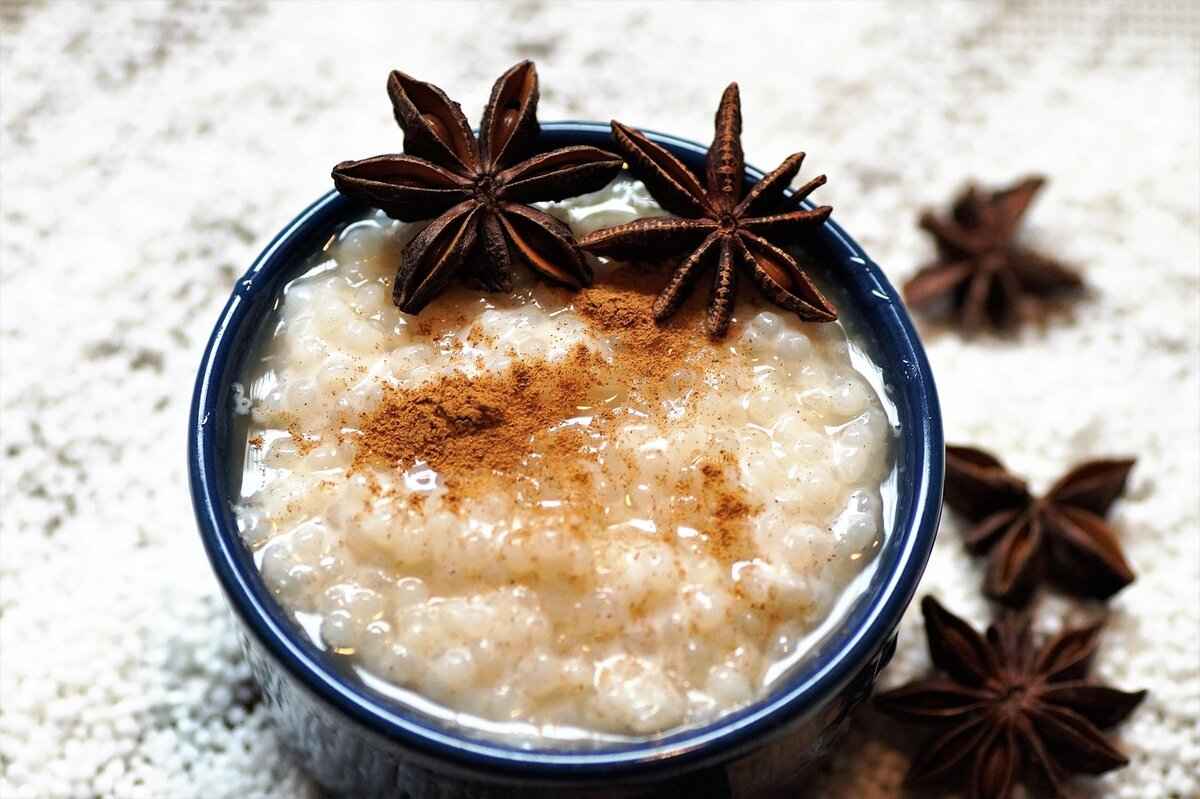
Creative Serving Suggestions
Chia seed pudding is not only a nutritious dessert but also a canvas for your culinary creativity. With its unique texture and ability to absorb flavors, it can be transformed into various delightful presentations. Here are some that will elevate your chia seed pudding experience.
- Parfaits: Layer your chia seed pudding with yogurt, fresh fruits, and a sprinkle of granola for a visually appealing parfait. This not only enhances the flavor but also adds different textures, making each bite interesting.
- Smoothies: Blend chia seed pudding into your favorite smoothies for added thickness and nutritional benefits. This is an excellent way to sneak in extra fiber and omega-3s while enjoying a refreshing drink.
- Overnight Oats Alternative: Use chia seed pudding as a base for overnight oats. Combine it with oats, almond milk, and your favorite toppings for a quick, nutritious breakfast option that is ready to go in the morning.
- Chocolate Delight: Mix cocoa powder into your chia seed pudding for a rich chocolate flavor. Top with sliced bananas and a drizzle of honey for a decadent yet healthy dessert.
- Fruit Cups: Serve chia seed pudding in individual cups topped with seasonal fruits. This not only looks appealing but also allows for portion control, making it a great option for parties or gatherings.
Experimenting with flavors can take your chia seed pudding to the next level. Here are some unique combinations:
- Coconut and Pineapple: Mix coconut milk with chia seeds and top with pineapple chunks for a tropical twist.
- Matcha Green Tea: Add matcha powder to your chia pudding for an energizing boost, paired with almond milk and a hint of vanilla.
- Spiced Pumpkin: During the fall, incorporate pumpkin puree and pumpkin spice for a seasonal treat that is both comforting and nutritious.
Absolutely! Chia seed pudding can double as a nutritious breakfast option. Prepare it the night before and let it soak in the fridge, allowing the seeds to absorb the liquid and develop a creamy texture. In the morning, simply top with fruits, nuts, or seeds for a balanced meal that keeps you full throughout the day.
The presentation of chia seed pudding can significantly enhance the overall experience. Consider these tips:
- Use Clear Glasses: Serving in clear glasses allows the beautiful layers to shine through, making it more enticing.
- Add Colorful Toppings: Bright fruits like berries, kiwi, or mango not only add flavor but also make your dish pop visually.
- Drizzle with Honey or Maple Syrup: A drizzle of honey or syrup on top can create an eye-catching finish while adding sweetness.
Incorporating these will not only make your chia seed pudding more enjoyable but also inspire you to experiment with flavors and presentations. Whether you’re preparing it for yourself or entertaining guests, these ideas will surely impress and satisfy.
Layering with Fruits and Nuts
Layering chia seed pudding with fresh fruits, nuts, or granola is not just a way to enhance the visual appeal of this nutritious dish; it also significantly boosts its nutritional value and flavor profile. The combination of textures and tastes creates a delightful experience that can satisfy both your sweet tooth and your health goals.
Layering ingredients in chia seed pudding transforms a simple dish into a multi-dimensional treat. When you incorporate fresh fruits, you introduce natural sweetness and a variety of vitamins and minerals. For instance, berries are rich in antioxidants, while bananas offer potassium, making them an excellent choice for health-conscious individuals.
- Berries: Strawberries, blueberries, and raspberries are low in calories and high in fiber.
- Bananas: They add creaminess and are a great source of energy.
- Mangoes: These tropical fruits bring a sweet, juicy flavor and are packed with vitamins A and C.
- Peaches: They offer a refreshing taste and are rich in antioxidants.
Nuts are another fantastic addition to chia seed pudding. They provide a satisfying crunch and are a great source of healthy fats, protein, and fiber. Some popular choices include:
- Almonds: Rich in vitamin E and magnesium, they support heart health.
- Walnuts: Known for their omega-3 fatty acids, they are excellent for brain health.
- Pistachios: These nuts are lower in calories and high in protein, making them a great snack.
Granola can also be layered into chia seed pudding for an extra crunch and flavor. It often contains oats, nuts, seeds, and natural sweeteners, providing a well-rounded source of energy. When choosing granola, opt for varieties that are low in added sugars to keep your pudding healthy.
To create a visually appealing and delicious layered chia seed pudding, start by preparing your base pudding with chia seeds and your choice of liquid, like almond milk or coconut milk. Once it has thickened, you can begin layering:
1. Start with a layer of chia seed pudding.2. Add a layer of your chosen fruits.3. Sprinkle a handful of nuts or granola.4. Repeat the layers until you reach the top of your container.5. Finish with a dollop of yogurt or a drizzle of honey for added flavor.
Each layer you add not only enhances the flavor but also contributes to the overall health benefits of your chia seed pudding. The combination of fruits, nuts, and granola provides a balance of macronutrients and micronutrients, making it a complete meal or snack option. The fiber content helps with digestion, while the healthy fats from nuts support heart health.
Layering chia seed pudding with fruits, nuts, and granola is an easy way to create a nutritious and satisfying dessert or breakfast. With endless combinations and flavors to explore, this dish can cater to a variety of dietary preferences while ensuring you enjoy a delicious treat that supports your health.
Using as a Breakfast Option
Chia seed pudding is not just a delightful dessert; it can also serve as a nutritious breakfast option. Packed with essential nutrients, this versatile dish offers a fantastic way to kickstart your day with sustained energy and satiety.
Many people struggle with finding a breakfast that keeps them full and energized until lunch. Chia seed pudding can be the perfect solution. Rich in fiber, protein, and healthy fats, chia seeds expand when soaked in liquid, creating a filling meal that helps curb hunger.
When you consume chia seeds, they absorb up to 10-12 times their weight in liquid, forming a gel-like consistency. This process not only enhances the texture of the pudding but also contributes to a feeling of fullness that lasts for hours. This makes chia seed pudding an excellent choice for those looking to manage their weight or simply avoid mid-morning cravings.
- Omega-3 Fatty Acids: Essential for heart and brain health.
- Fiber: Aids digestion and promotes gut health.
- Protein: Supports muscle repair and growth.
- Antioxidants: Help combat oxidative stress in the body.
Making chia seed pudding is incredibly simple and requires minimal ingredients. Here’s a basic recipe to get you started:
Ingredients:- 1/4 cup chia seeds- 1 cup almond milk (or any milk of your choice)- 1-2 tablespoons honey or maple syrup (optional)- 1/2 teaspoon vanilla extract (optional)Instructions:1. In a bowl, mix chia seeds with almond milk.2. Add sweetener and vanilla if desired.3. Stir well to combine and prevent clumping.4. Cover and refrigerate for at least 2 hours or overnight.5. Serve with your favorite toppings like fruits, nuts, or granola.
One of the best things about chia seed pudding is its versatility. You can customize it to suit your taste preferences. Here are some delicious toppings to consider:
- Fresh Fruits: Berries, sliced bananas, or mango add natural sweetness.
- Nuts and Seeds: Almonds, walnuts, or pumpkin seeds provide crunch and healthy fats.
- Granola: A sprinkle of granola can enhance texture and flavor.
- Nut Butters: Almond or peanut butter can add richness and protein.
Absolutely! One of the advantages of chia seed pudding is that it can be prepared in advance, making it a convenient breakfast option for busy mornings. You can make several servings at once and store them in the refrigerator for up to five days. Just grab a jar in the morning, add your favorite toppings, and you’re ready to go!
Incorporating chia seed pudding into your breakfast routine can be a game-changer. Not only does it provide nutritional benefits, but it also offers a satisfying and delicious way to start your day. With its ease of preparation and endless customization options, chia seed pudding is truly a breakfast that caters to your health and taste preferences.

Common Mistakes to Avoid
Chia seed pudding is a delightful and nutritious treat that can be easily prepared at home. However, many people encounter challenges that can affect the texture and flavor of this healthy dessert. Avoiding common mistakes is essential to ensure you achieve the perfect chia seed pudding, enhancing your overall experience.
One of the most frequent mistakes is using incorrect liquid ratios. The ideal ratio for chia seeds to liquid is typically 1:4, meaning for every tablespoon of chia seeds, you should use four tablespoons of your chosen liquid. Using too much liquid can lead to a watery pudding, while too little can create a thick, unpalatable texture. Always measure accurately to achieve the desired consistency.
Another common pitfall is insufficient soaking time. Chia seeds require time to absorb liquid and expand. For best results, allow them to soak for at least two hours, but overnight soaking is recommended for optimal texture. This process transforms the seeds into a gel-like consistency, which is crucial for a creamy pudding.
Many people stick to basic flavors and miss out on the opportunity to enhance their chia pudding. Experimenting with different flavor combinations can elevate your pudding from simple to sensational. Consider adding vanilla extract, cocoa powder, or fresh fruits like berries or bananas. These additions not only improve taste but also increase the nutritional value of your dessert.
Using stale or expired ingredients can significantly impact the flavor of your chia pudding. Always ensure that your ingredients, especially liquids such as almond milk or coconut milk, are fresh. Quality matters in achieving a delicious end product.
Presentation can also affect your enjoyment of chia pudding. Many people simply pour the pudding into a bowl, but consider layering it with yogurt, nuts, or granola for added texture and visual appeal. This not only makes the dish more appetizing but also adds variety to each bite.
Improper storage can lead to spoilage and loss of flavor. Chia seed pudding should be stored in an airtight container in the refrigerator, where it can last for up to five days. If you plan to make a larger batch, consider freezing portions for longer storage. This way, you can easily enjoy a healthy dessert whenever you desire.
By avoiding these common mistakes, you can create a chia seed pudding that is not only nutritious but also delicious. Remember to pay attention to liquid ratios, soaking times, and ingredient freshness. With a little practice and creativity, you can enjoy a satisfying and healthy dessert that aligns with your wellness goals.
Incorrect Liquid Ratios
When it comes to making chia seed pudding, achieving the right consistency is crucial for a delightful experience. One of the most common issues that home cooks encounter is the use of incorrect liquid ratios. This can lead to a pudding that is either too runny or overly thick, detracting from the overall enjoyment of this nutritious dessert.
The ideal ratio for preparing chia seed pudding is typically 1:4 chia seeds to liquid. This means for every one part of chia seeds, you should use four parts of your chosen liquid, such as almond milk, coconut milk, or even fruit juice. This ratio ensures that the chia seeds have enough liquid to absorb, swell, and create a creamy texture that is both satisfying and enjoyable.
- Too Much Liquid: If you add too much liquid, the pudding will become watery and fail to thicken properly. This can lead to a less enjoyable eating experience.
- Too Little Liquid: Conversely, using insufficient liquid will cause the chia seeds to clump together, resulting in a gritty and unpleasant texture.
To achieve the perfect pudding, it’s essential to measure your ingredients accurately. Here are some tips:
1. Use a standard measuring cup for both chia seeds and liquid.2. Pour the liquid into the measuring cup first, then add chia seeds according to the 1:4 ratio.3. Stir the mixture well to ensure the seeds are evenly distributed.
After mixing the chia seeds and liquid, allow the pudding to sit for at least 2 hours, or ideally overnight. This soaking period is vital for the seeds to absorb the liquid fully, achieving the desired thickness. If you rush this step, you may end up with a pudding that has not reached its full potential.
While the 1:4 ratio is a great starting point, feel free to experiment with different liquids and flavorings. For instance, using coconut milk can add a tropical twist, while almond milk offers a nutty flavor. Just remember to maintain the same ratio to ensure the pudding sets correctly.
- Neglecting the Ratio: Always stick to the recommended ratio to avoid undesirable consistency.
- Skipping the Soaking Time: Allowing the mixture to sit is crucial for optimal texture.
- Not Stirring Properly: Ensure that the chia seeds are well-distributed in the liquid to prevent clumping.
In summary, the right liquid ratio is essential for creating the perfect chia seed pudding. Following the 1:4 ratio, measuring accurately, and allowing sufficient soaking time will yield a delicious and satisfying dessert. By avoiding common mistakes and experimenting with flavors, you can enjoy a healthy treat that caters to your taste preferences.
Insufficient Soaking Time
When it comes to creating the perfect chia seed pudding, one of the most critical factors to consider is the soaking time of the chia seeds. Insufficient soaking time can lead to a less than desirable texture, causing the pudding to be gritty rather than smooth and creamy. Understanding the importance of soaking chia seeds properly is essential for achieving the best results.
Chia seeds have the unique ability to absorb liquid, expanding up to 10-12 times their original size. This process is crucial for creating a pudding-like consistency. When chia seeds are not soaked long enough, they do not fully hydrate, resulting in a gritty texture that can be unappetizing. To avoid this, aim for a soaking time of at least 2 hours, although soaking overnight is recommended for optimal results.
- Minimum Soaking Time: 2 hours
- Optimal Soaking Time: Overnight (8 hours)
Soaking chia seeds for a minimum of 2 hours allows them to absorb enough liquid to create a smoother texture. However, for the best outcome, soaking them overnight is ideal. This extended time ensures that the seeds are fully hydrated, resulting in a creamy pudding that is both satisfying and nutritious.
If you skip the soaking process or do not allow enough time for the seeds to absorb the liquid, you may end up with a pudding that has a gritty texture. This can detract from the overall eating experience and may leave you feeling unsatisfied. Furthermore, the health benefits of chia seeds, such as their high fiber content, are best realized when they are properly hydrated.
To ensure you achieve the best texture for your chia seed pudding, consider the following tips:
- Use the Right Liquid Ratio: A common ratio is 1 part chia seeds to 4 parts liquid. This balance helps achieve the perfect thickness.
- Stir Before Soaking: Give the mixture a good stir immediately after combining chia seeds and liquid. This helps prevent clumping.
- Cover and Refrigerate: If soaking overnight, cover your mixture and place it in the refrigerator to maintain freshness.
Don’t be afraid to experiment with different soaking times to find what works best for your taste preferences. Some people prefer a thicker pudding, while others enjoy a slightly thinner consistency. Adjusting the soaking time can help you achieve your desired texture.
In summary, allowing sufficient time for chia seeds to soak is essential for creating a delicious and nutritious chia seed pudding. By following the recommended soaking times and tips, you can enjoy a creamy, satisfying dessert that not only tastes great but also offers numerous health benefits. So, next time you prepare chia seed pudding, remember that patience is key to achieving the perfect texture!
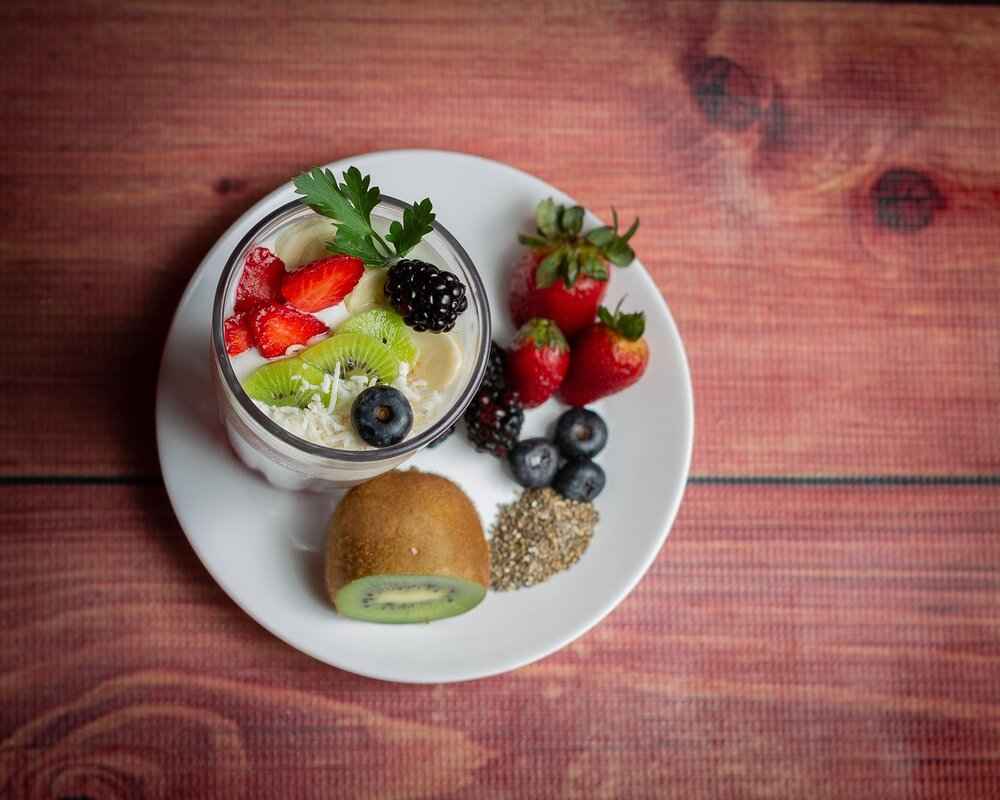
Storage Tips for Chia Seed Pudding
Proper storage methods can significantly extend the shelf life of chia seed pudding, allowing you to enjoy this nutritious dessert throughout the week without compromising its quality. Understanding how to store chia seed pudding is essential for maintaining its texture and flavor, ensuring that you have a healthy option ready whenever you crave it.
Chia seed pudding is not only delicious but also packed with nutrients. However, improper storage can lead to spoilage or a change in texture. By following the right storage techniques, you can keep your pudding fresh and tasty for longer. Here are some key tips:
- Use an Airtight Container: Always store your chia seed pudding in an airtight container. This prevents air from entering, which can cause the pudding to dry out or absorb unwanted odors from the fridge.
- Optimal Temperature: Keep your pudding in the refrigerator at a consistent temperature. The ideal range is between 32°F to 40°F (0°C to 4°C). This helps maintain the freshness and prevents bacterial growth.
- Duration: When stored properly, chia seed pudding can last for up to five days in the refrigerator. Always check for any signs of spoilage, such as an off smell or changes in texture.
If you want to keep your chia seed pudding for an extended period, freezing is an excellent option. Here’s how to do it:
- Portion Control: Freeze your chia seed pudding in individual portions. This makes it easy to thaw only what you need, reducing waste.
- Use Freezer-Safe Containers: Ensure that you use containers that are safe for freezing to prevent any leaks or spills. Silicone molds or freezer bags work well for this purpose.
- Thawing Tips: To enjoy your frozen pudding, transfer it to the refrigerator to thaw overnight. Avoid microwaving, as this can alter the texture and consistency.
It’s crucial to know when your chia seed pudding is no longer safe to eat. Look out for:
- Unpleasant Smell: A sour or off smell indicates spoilage.
- Change in Texture: If the pudding becomes overly watery or clumpy, it may have gone bad.
- Visible Mold: Any signs of mold growth mean you should discard the pudding immediately.
If you find yourself with leftover chia seed pudding, consider these creative uses:
- Smoothies: Blend it into your morning smoothie for added thickness and nutrition.
- Overnight Oats: Mix it with oats for a hearty breakfast option.
- Baking: Incorporate it into baked goods like muffins or pancakes for a nutritious boost.
By following these storage tips, you can enjoy your chia seed pudding at its best, ensuring that it remains a healthy and delicious part of your diet throughout the week.
Refrigeration Guidelines
Chia seed pudding is a delicious and nutritious option for those seeking a healthy dessert or snack. However, to maintain its freshness and flavor, proper storage is essential. In this section, we will explore the best practices for storing chia seed pudding, focusing on refrigeration guidelines and tips for extending its shelf life.
Storing chia seed pudding correctly is crucial for several reasons:
- Freshness: Proper storage helps retain the flavor and texture of the pudding.
- Safety: Ensuring that the pudding is stored in a clean, airtight container minimizes the risk of contamination.
- Convenience: Knowing how to store chia seed pudding allows you to prepare it in advance and enjoy it throughout the week.
Chia seed pudding should be kept in an airtight container in the refrigerator. This method prevents exposure to air, which can lead to spoilage and loss of flavor. Here are some key tips:
- Use Glass or Plastic Containers: Choose containers that seal tightly. Glass jars are excellent options as they do not absorb odors and are easy to clean.
- Label Your Containers: If you prepare multiple servings, consider labeling each container with the date of preparation. This practice helps you keep track of freshness.
- Store in the Back: Place your chia seed pudding towards the back of the refrigerator where the temperature is more consistent.
When stored properly in an airtight container, chia seed pudding can last for up to five days without losing its freshness. However, it is essential to check for any signs of spoilage, such as an off smell or changes in texture, before consuming. If you notice any of these signs, it’s best to discard the pudding.
If you want to extend the shelf life of your chia seed pudding beyond five days, freezing is an excellent option. Here are some tips for freezing:
- Portion Control: Freeze chia seed pudding in individual servings. This makes it easy to thaw only what you need.
- Use Freezer-Safe Containers: Ensure that the containers are suitable for freezing to prevent cracks or leaks.
- Thawing: When ready to eat, thaw the pudding in the refrigerator overnight or in the microwave for a quick option.
After refrigerating or freezing, you may notice slight changes in texture. Chia seed pudding can sometimes become thicker or grainier. To restore its creamy consistency, simply stir in a bit of additional liquid (like almond milk or coconut milk) before serving.
Proper refrigeration and storage techniques are essential for enjoying chia seed pudding at its best. By following these guidelines, you can ensure that your pudding remains fresh, flavorful, and ready to satisfy your cravings throughout the week. Whether you choose to enjoy it as a snack, breakfast, or dessert, knowing how to store chia seed pudding will enhance your overall experience.
Freezing for Longer Storage
For those who love the health benefits of chia seed pudding but want to prepare in advance, freezing is an excellent option. This method allows you to enjoy a nutritious dessert at any time without the need for daily preparation. By freezing chia seed pudding in individual portions, you can conveniently thaw only what you need, ensuring freshness and minimizing waste.
To freeze chia seed pudding effectively, follow these simple steps:
- Choose Your Container: Use airtight containers or freezer-safe bags to prevent freezer burn. Ice cube trays can also be handy for smaller portions.
- Portion Control: Divide the pudding into single servings. This makes it easier to thaw just the right amount for your cravings.
- Label and Date: Always label your containers with the date and flavor. This helps you keep track of freshness and variety.
When you’re ready to enjoy your frozen chia seed pudding, simply transfer a portion to the refrigerator and allow it to thaw overnight. If you’re short on time, you can also thaw it at room temperature for about 30 minutes. Once thawed, give it a good stir to restore its creamy texture, and feel free to add your favorite toppings such as fresh fruits, nuts, or a drizzle of honey for extra flavor.
It’s important to note that while freezing can extend the shelf life of chia seed pudding, it may slightly alter the texture. The pudding may become a bit more watery upon thawing, so adjusting the liquid content during preparation can help maintain the desired consistency. A good rule of thumb is to slightly reduce the liquid when making pudding intended for freezing.
Freezing chia seed pudding not only saves time but also encourages a healthier lifestyle. Having ready-to-eat, nutritious desserts on hand can help you resist the temptation of less healthy options. This is particularly beneficial for busy individuals or families looking to incorporate more superfoods into their diets without compromising on taste or convenience.
In summary, freezing chia seed pudding is a practical and efficient way to enjoy this healthy dessert. By following the right techniques for freezing and thawing, you can ensure that your chia seed pudding remains delicious and nutritious, ready to be enjoyed whenever the craving strikes.

Conclusion: Why Choose Chia Seed Pudding?
Chia seed pudding is not just a dessert; it is a nutritious powerhouse that fits seamlessly into a healthy lifestyle. With its rich nutritional profile and incredible versatility, it has become a favorite among health enthusiasts and dessert lovers alike. This article delves into the many reasons to choose chia seed pudding, exploring its health benefits, preparation methods, and creative serving ideas.
The popularity of chia seed pudding stems from its ease of preparation and the ability to customize it to suit various dietary preferences. Whether you are vegan, gluten-free, or just looking for a healthy treat, chia seed pudding can be tailored to your needs.
Chia seeds are often hailed as a superfood due to their impressive nutritional content. They are loaded with:
- Omega-3 fatty acids: Essential for heart and brain health.
- High fiber content: Aids in digestion and promotes satiety.
- Protein: Supports muscle repair and growth.
- Antioxidants: Help combat oxidative stress in the body.
Incorporating chia seed pudding into your diet can offer numerous health benefits:
- Improved Digestion: The high fiber content promotes regularity and gut health.
- Weight Management: Chia seeds absorb liquid and expand, creating a feeling of fullness.
- Heart Health: Omega-3s help reduce inflammation and lower cholesterol levels.
Making chia seed pudding is incredibly simple. Here’s a basic recipe:
Ingredients:- 1/4 cup chia seeds- 1 cup almond milk (or any milk of choice)- 1-2 tablespoons sweetener (like honey or maple syrup)- Optional: vanilla extract, cocoa powder, or fruit for flavoringInstructions:1. In a bowl, mix chia seeds, milk, and sweetener.2. Stir well to prevent clumping.3. Let it sit for 5-10 minutes, then stir again.4. Refrigerate for at least 2 hours or overnight.5. Serve chilled, topped with your favorite fruits or nuts.
One of the best aspects of chia seed pudding is its adaptability. Here are some ideas to enhance your pudding:
- Chocolate Delight: Add cocoa powder for a rich chocolate flavor.
- Fruit Fusion: Mix in pureed fruits like mango or berries.
- Nutty Banana: Top with sliced bananas and a sprinkle of nuts.
Chia seed pudding can be served in various creative ways:
- Parfaits: Layer with yogurt and granola for a breakfast treat.
- Smoothies: Blend into your favorite smoothie for added texture and nutrition.
To enjoy your chia seed pudding throughout the week, proper storage is essential:
- Refrigeration: Store in an airtight container; it lasts up to five days.
- Freezing: For longer storage, freeze in portions and thaw as needed.
In summary, chia seed pudding is a delightful option for those seeking a healthy dessert that satisfies sweet cravings without compromising nutrition. Its simple preparation and customizable nature make it an ideal choice for anyone looking to incorporate more wholesome foods into their diet.
Frequently Asked Questions
- What are the main ingredients in chia seed pudding?
The basic ingredients for chia seed pudding are chia seeds, a liquid (like almond milk or coconut milk), and a sweetener (such as honey or maple syrup). You can also add flavorings like vanilla or cocoa for a delicious twist!
- How long should I soak chia seeds?
For the best texture, you should soak chia seeds for at least 2 hours, but overnight is ideal. This allows them to absorb the liquid and swell, creating that creamy pudding consistency we all love!
- Can I customize my chia seed pudding?
Absolutely! Chia seed pudding is incredibly versatile. You can mix in fruits, nuts, or spices to create your own unique flavors. Think of it as a blank canvas for your culinary creativity!
- How do I store chia seed pudding?
Store your chia seed pudding in an airtight container in the refrigerator. It can last up to five days, making it a convenient snack or dessert option throughout the week!
- Is chia seed pudding suitable for meal prep?
Yes! Chia seed pudding is perfect for meal prep. You can make several servings at once and store them in the fridge or even freeze them for longer storage. Just grab a portion whenever you need a healthy treat!


